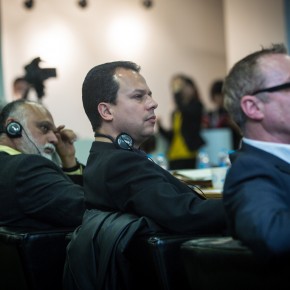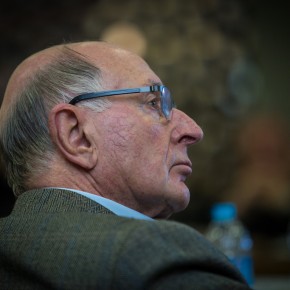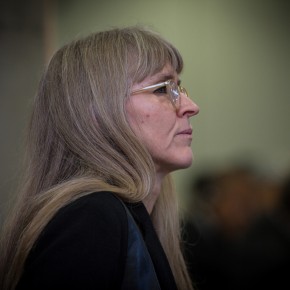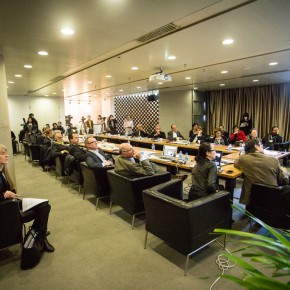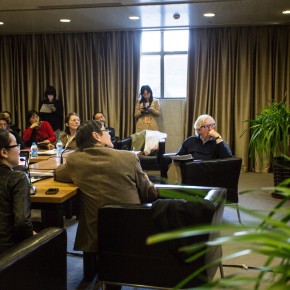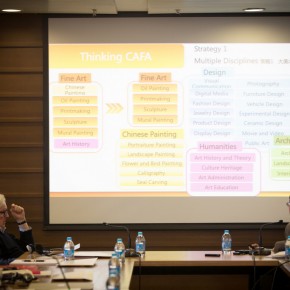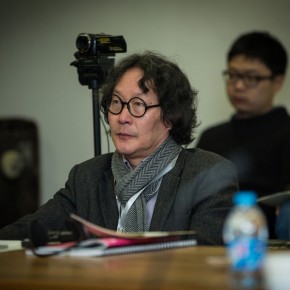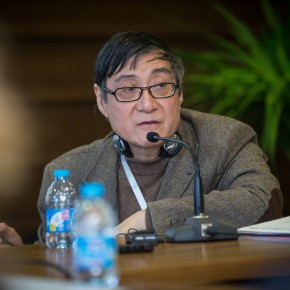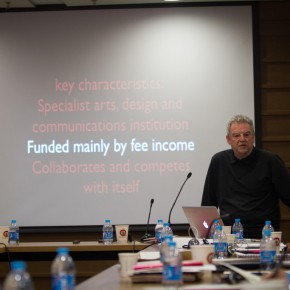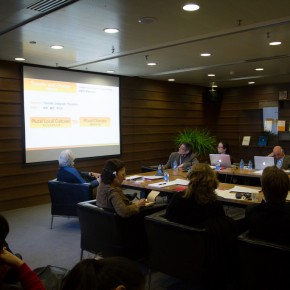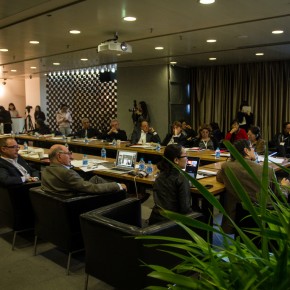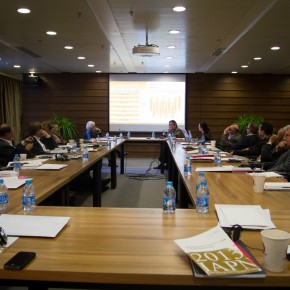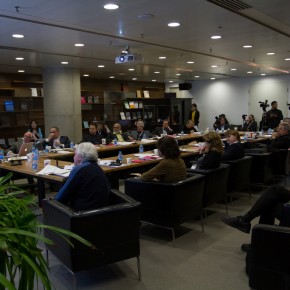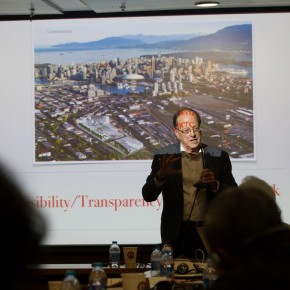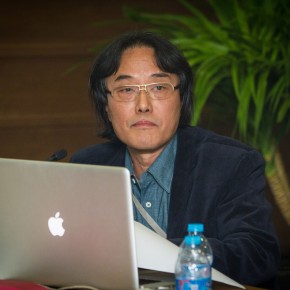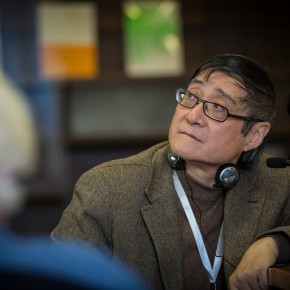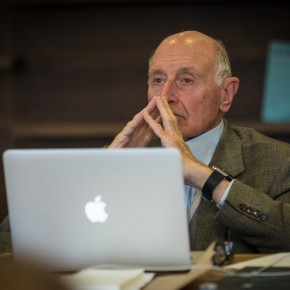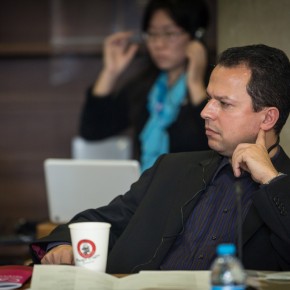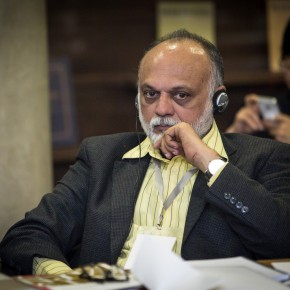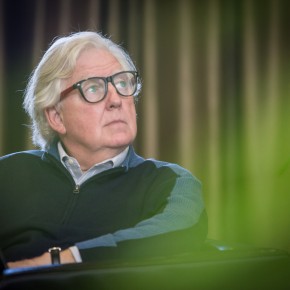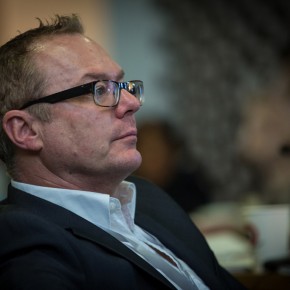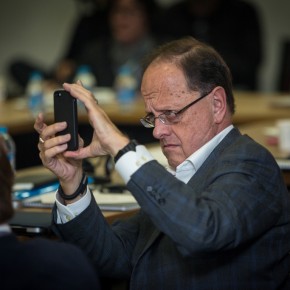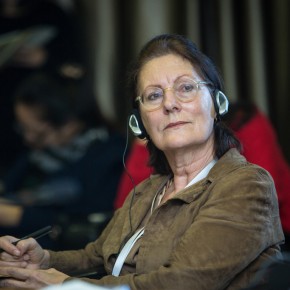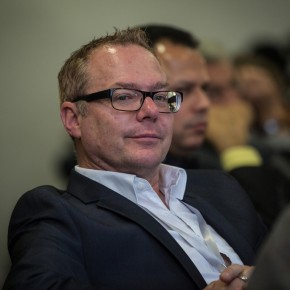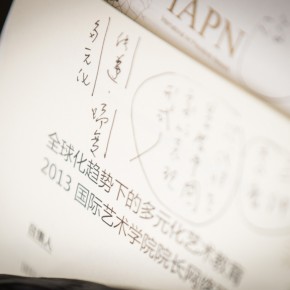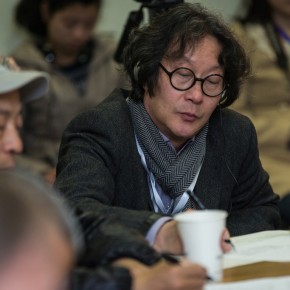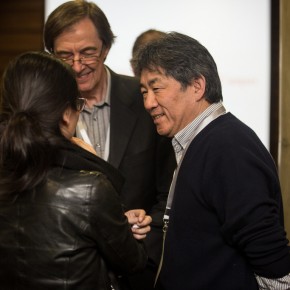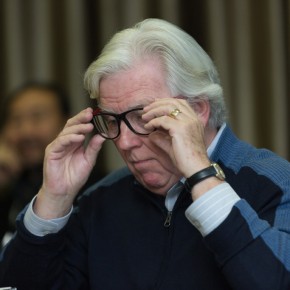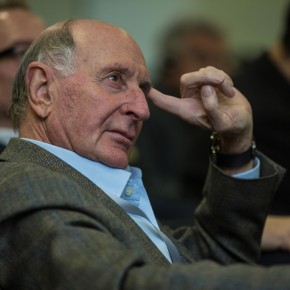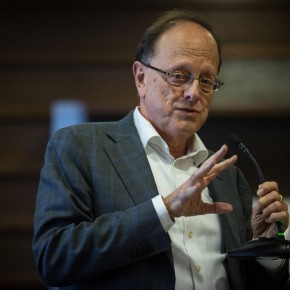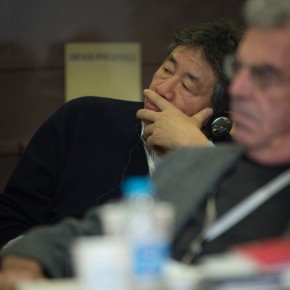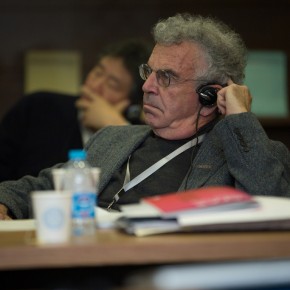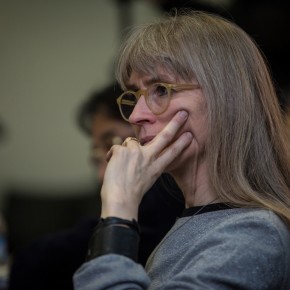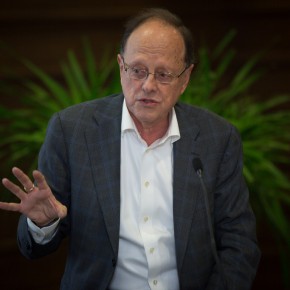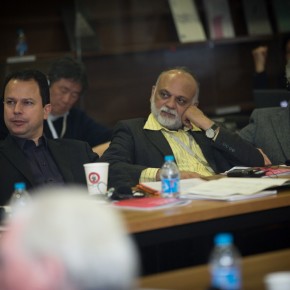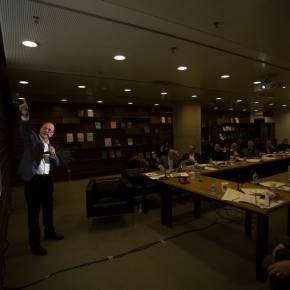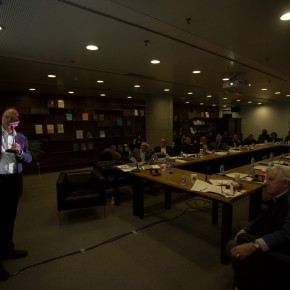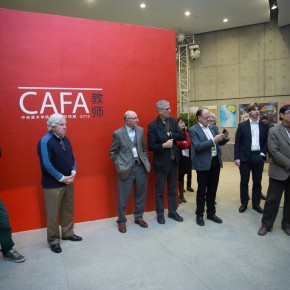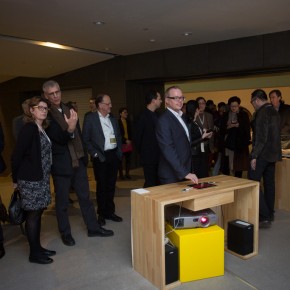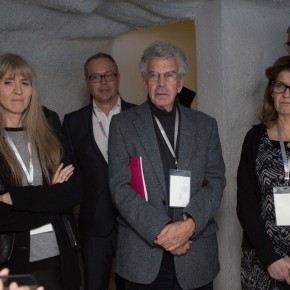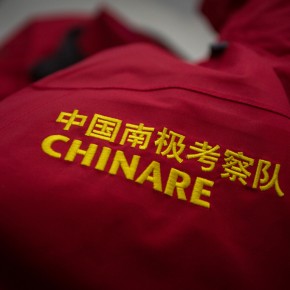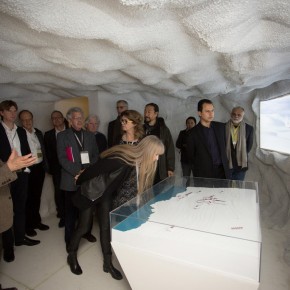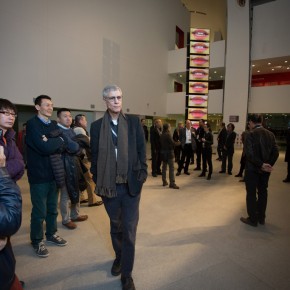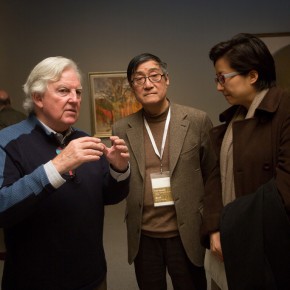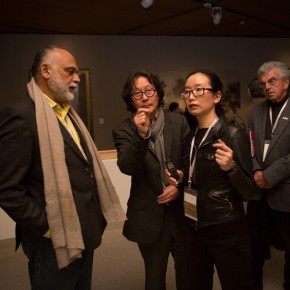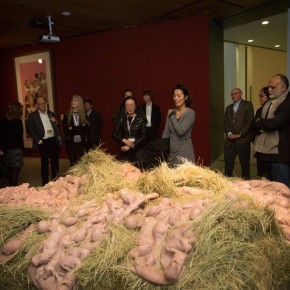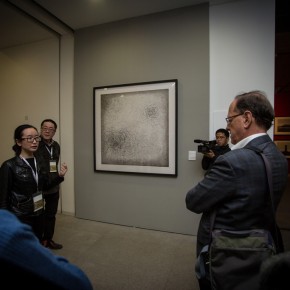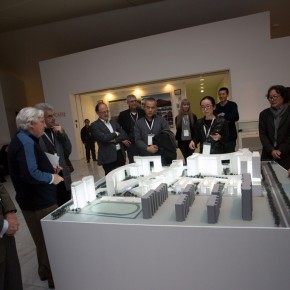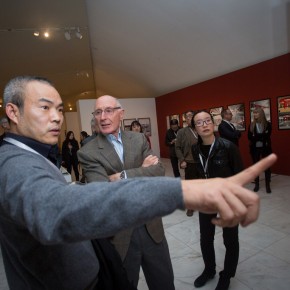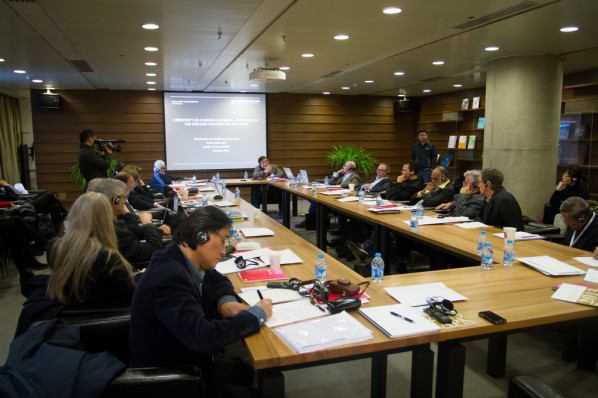
Initiated and presided over by Prof. Pan Gongkai, President of CAFA, Professor Tony Jones, Chancellor & President Emeritus of the School of Art Institute of Chicago, “Symposium of International Art Presidents Network 2013 (IAPN)” was held at the Auditorium of CAFA Art Museum on December 5, continuing to December 6, 2013. Sixteen presidents from the world's top art colleges got together, and discussed the topic of “Diversified art education in a global context”.
At the symposium on December 5, Tony Jones, Co-chairman of the International Art Presidents Network initially briefed the audience on the plan of the conference, hoping to create the establishment of a good network project to make a variety of institutes improve their communication and exchange with each other. Pan Gongkai, Co-Chairman of the International Art Presidents Network said, the complexity, rapid and broad reaching way of transferring information in the era of globalization resulted in diversification of the development of various regions, showcasing three attitudes in the interaction between transferring information and local culture: copying, fusion and change, as well resistance, and taking the development of CAFA as an example for detailed explanation.
When the issue of “How to finish the modernization and transformation of tradition” was asked at the scene, Pan Gongkai said the graphology of Chinese painting might be a new way to realize the modern transformation of tradition. Vice President Xu Bing said Chinese culture focused on symbols, preferring to stylize complicated stuff, different from the Western way that was looking for new ways.
Themed “Diversified Art Education in a Global Context”, the Symposium of International Art Presidents Network 2013 was divided into two sections for keynote speeches, including “Identity and Characteristics – New Approach”, and “New Tradition – Good Approach”:
Ms. Frida Ingsvarsdottir, President of the Iceland Academy of the Arts, Reykjavik, Iceland, said the academy encouraged students to develop their characters to create art, advocating a special teaching with a combination of art and activities of practice production.
Shivaji Panikkar, Dean of the School of Culture and Creative Expression, Ambedkar Iniversity, Delhi, India, said that the development of artistic practice had exceeded the development of artistic education in the last 20 years. Students were encouraged to apply new forms of expression, while teaching focused on applying the new media, new techniques, employing interdisciplinary approaches and perspectives.
Robin Baker, President of Ravensbourne, London, UK, said that under the impact of digital technology, great changes occurred in contemporary art education. It was necessary for art colleges to see this change and actively transform themselves under the changes, guiding students to adapt, change and have a self-realisation.
Ron Burnett, President of Emily Carr University of Art & Design, Vancouver, Canada, took the university as an example to explain that the site and architectural construction was very important to cultural construction of the school and public cultural dissemination.
Christopher Wainwright, Vice President of University of the Arts / Chelsea, London, UK, believed the process of globalization has led to more international students in the academy, which brought new challenges for artistic education.
Ross Harley, Dean of COFA, UNSW, Paddington, Australia, said the era of information had brought new concepts and ideas, meanwhile there was a detailed analysis of the reform and development of staff, and proposed a goal to go forward.
Fred Lazarus, President of Maryland Institute of the Arts, Baltimore, USA, supported the combination of traditional and new teaching approaches, to enable students to have more practice, to find a way out in the reformed structure of teachers and multi- college cooperation.
Alan Murray, Vice President of Edinburgh College of Art, Scotland, UK, said the cooperation of different professions between colleges was particularly important in current art education, interdisciplinary cooperation also promoted artistic educators towards useful reflections.
Wang Zan, Vice President of China Academy of Art said one of the most difficult things for art colleges was the “internal structural contradiction brought by the constraint of institutional management”. Such a constraint brought a great challenge to the management of an art college, and proposing the core of disciplinary and professional construction was a talent.
After the discussion, the deans visited the Teachers’ Works of CAFA which is on display in the CAFA Art Museum, guided by Pan Gongkai, Xu Bing and disciplinary leaders, while Wang Huangsheng also briefed the second “CAFAM Future” project which is about to be held next year.
It was the second day of the symposium of International Art Presidents Network on December 6, all deans discussed the topic of “How to cultivate students, how to offer a creative leadership”. Shivaji Panikkar, Dean of the School of Culture and Creative Expressions, Ambedkar Iniversity, Delhi, India, referred to the importance of interdisciplinary training in art education once again. Xu Bing said schools needed to explore the “urchin quality” of students, to balance a variety of rational training in artistic education; secondly they must also pay attention to cultivate links between students’ personality and social values. Pan Gongkai said current students had a wide range of knowledge, with a lot of fresh ideas, but they generally missed the ability of in-depth study of an issue and the ability to solve a practical issue.
Discussion on the issue of “leadership”, Pan Gongkai said ensuring a stable foundation in teaching, emphasizing the professional inside the knowledge, was the basis to cultivate talented students. Naren Barfield, Vice President of the London Academy of Art, UK said it was necessary to rethink the concept of “leadership” so that it could maintain a transparency and openness, and listen to the voice of the educated. Chris Wainwright, Vice President of the University of the Arts London, reduced leadership to influence and followers. Ross Harley, President of the University of New South Wale, Sydney, Australia hoped to establish a more comprehensive approach to leadership, so that art institutions were able to stick to their principles, while maintaining an open mind to communicate and exchange with other people. Tony Jones concluded that, it was necessary that the present presidents of the top world art colleges shared their experiences on an international level, thinking of how to build a suitable teaching template. At the same time, we must conduct a dialogue between different circles of students, board of directors, and supervisors, offering opportunities for mutually sharing and studying. It was the end of the two-day symposium of the International Art Presidents Network 2013.
Journalist: Ye Yuanfeng, translated by Chen Peihua and edited by Sue/CAFA ART INFO.


